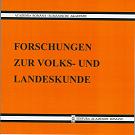DER UMGANG MIT DEM WALD IN SIEBENBÜRGEN - WIDERSPIEGELT IN DEN SIEBENBÜRGISCHEN VOLKSMÄRCHEN UND -SAGEN
The relation with the forest in Transylvania reflected in local fairytales and legends.
Author(s): Dorin-Ioan RusSubject(s): Customs / Folklore
Published by: Editura Academiei Române
Keywords: Forest; wood; nature; fairytale; folktale; history; orally; Romanians; Transylvanian Saxons; Székelys.
Summary/Abstract: The present study has three sections: in the first one, the author presents the material relation with the forest founding his assertions on a number of selected documents. The second section approaches the immaterial relation, where the forest is considered as a place of intersection with The Other World; while the third section underlines that, the wood is neither a source of energy nor a form of "the other". The analyzed fairy-tales reflect mainly the material relation with the forest, the Transylvanian populations sustaining their existence by practicing the lumbering, agriculture and animal husbandry. Most of the fairy-tales related with the wood are appearing in the Székely Land, an area where people have worked exclusively in the forestry economy, more than the other Transylvanian populations: Romanians, Germans or Hungarians. Then, the forest is an encounter place with the souls from The Other World where the Hero is meeting some special characters and magic forces of the wood. In these forests the heroes have to getting over some attempts, some initiations; for this reason the wood is considered also a space where the hero discovers his own self. The main difference reported to the Western fairy-tales is the presence of superstitions, a common characteristic of all the people that lived in the Balkans area. Another differentiation element resides in the interpretation of fairytale elements, their origins from the Transylvanian social and economical relations which had a different evolution, related to the development of Western society. Another feature is the presence of a streak of humor and pathos at the Székelys’ fairytales, compared to the Romanian and Saxon ones. However, there is a reciprocal influence of the forest's fairytales, a large number of subjects and themes being common from all the people from Transylvania. The present study is just a standpoint in the multidisciplinary research of the history of the Transylvanian ecosystem. In our opinion, beside the classic historical approach, the analyzing of people's unwritten discourse is very important in the research of the Transylvanian area.
Journal: Forschungen zur Volks- und Landeskunde
- Issue Year: 2014
- Issue No: 57
- Page Range: 166-187
- Page Count: 22
- Language: German
- Content File-PDF

